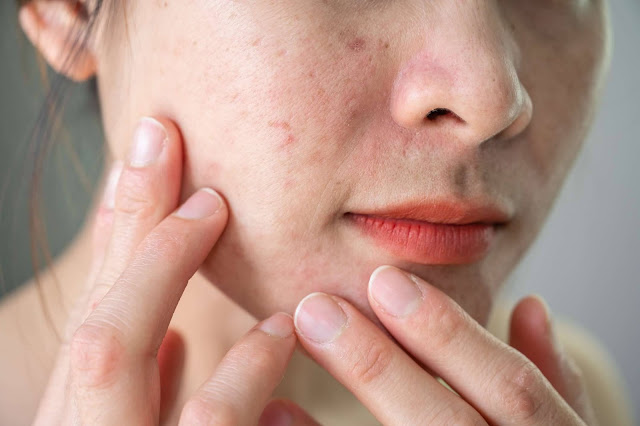- Get link
- X
- Other Apps
- Get link
- X
- Other Apps
In addition to prevention and treatment, maintaining an even skin tone requires consistent skincare practices and lifestyle choices:
Stick to a regular skincare routine with gentle products.
Stay hydrated to support overall skin health.
Avoid excessive exfoliation, which can exacerbate
pigmentation issues.
Eat a stable diet rich in antioxidants, vitamins, and
minerals.
Manage stress through relaxation techniques and self-care.
Get adequate sleep to promote skin rejuvenation and healing.
Wear sunscreen daily, even on cloudy day.
How to Treating Skin Pigmentation Issues?
If you are already dealing with pigmentation issues, there
are several treatment options available. The choice of treatment depends on the
type & severity of pigmentation. Consult with a dermatologist to determine
the most suitable approach. Here are some common treatment options:
1. Topical Treatments:
Over-the-counter and prescription topical treatments can
target pigmentation issues. Ingredients like hydroquinone, retinoids, kojic
acid, and alpha hydroxy acids (AHAs) may help lighten and even out skin tone.
2. Chemical Peels:
Chemical peels involve the request of a biochemical solution
to the skin, which exfoliates the top layer and reveals smoother, more even skin tone . Different types and strengths of peels are available, and a
dermatologist can recommend the most appropriate one for your skin.
3. Laser Therapy:
Laser treatments, such as fractional laser therapy & intense
pulsed light (IPL), can target and break down pigmentation. These procedures
are effective in treating various pigmentation issues, including sunspots and
melasma.
4. Microdermabrasion:
Microdermabrasion is a non-invasive process that uses a
device to exfoliate the skin's top layer. While it may not be as effective for
deep pigmentation issues, it can improve the appearance of mild pigmentation
changes.
5. Chemical Spot Treatments:
Dermatologists can provide spot treatments with chemical
agents for specific pigmentation changes, such as freckles or sunspots.
6. Dermabrasion:
Dermabrasion is a surgical procedure achieved by
dermatologists or plastic surgeons. It involves the removal of the skin's top
layers to address deep pigmentation issues and scarring.
7. Corticosteroid Creams:
In cases of inflammatory pigmentation issues, such as
post-inflammatory hyperpigmentation (PIH), corticosteroid creams may be
prescribed to reduce inflammation and pigmentation.
8. Microneedling:
Microneedling involves the use of a device with tiny needles
that create micro-injuries in the skin. This process can stimulate collagen
production and improve the appearance of pigmentation issues.
9. Camouflage Makeup:
Camouflage makeup products can help conceal pigmentation
issues temporarily. These products are available in various shades and
formulations for different skin concerns.
10. Consult a Dermatologist:
It's crucial to consult a dermatologist for personalized
treatment recommendations. A dermatologist can assess your specific condition,
recommend the most suitable treatment options, and monitor your progress.
Conclusion
Skin tone is a unique and beautiful aspect of human
diversity, determined by the amount of melanin in the skin. It's a spectrum
that ranges from very light to very dark shades, influenced by genetics, sun
exposure, and geographical ancestry. However, it's crucial to remember that
skin tone doesn't define an individual's worth, abilities, or identity.
Celebrating and respecting this diversity is vital for a more inclusive and
understanding society.
- Get link
- X
- Other Apps

Comments
Post a Comment